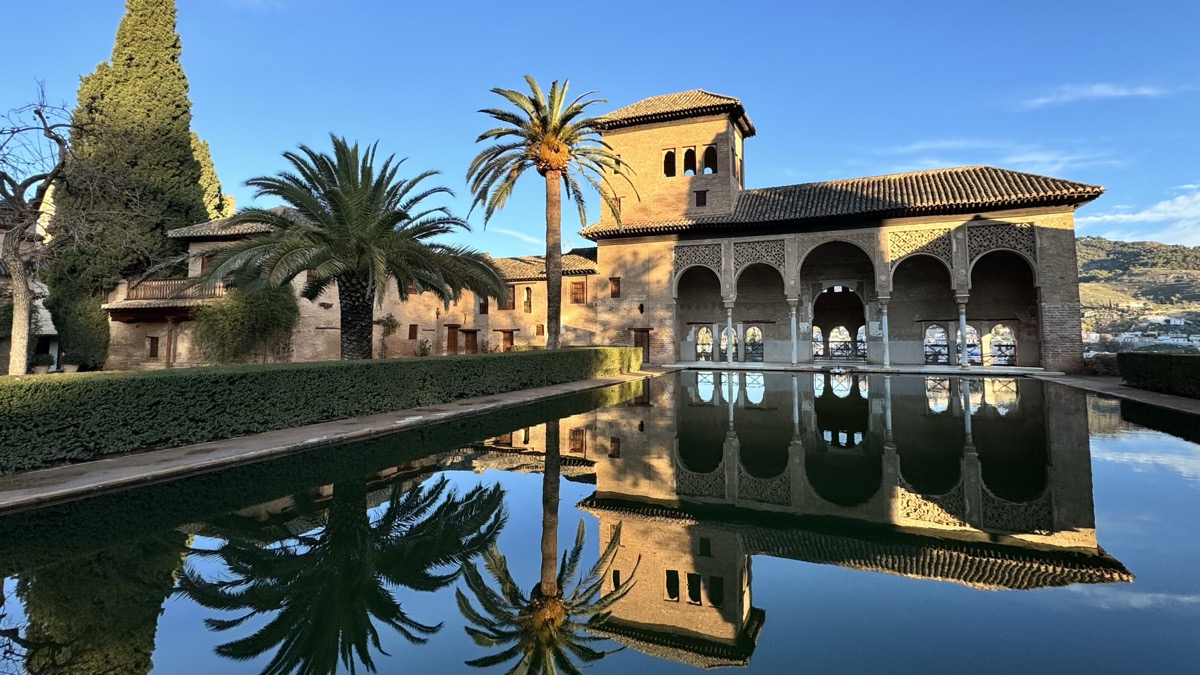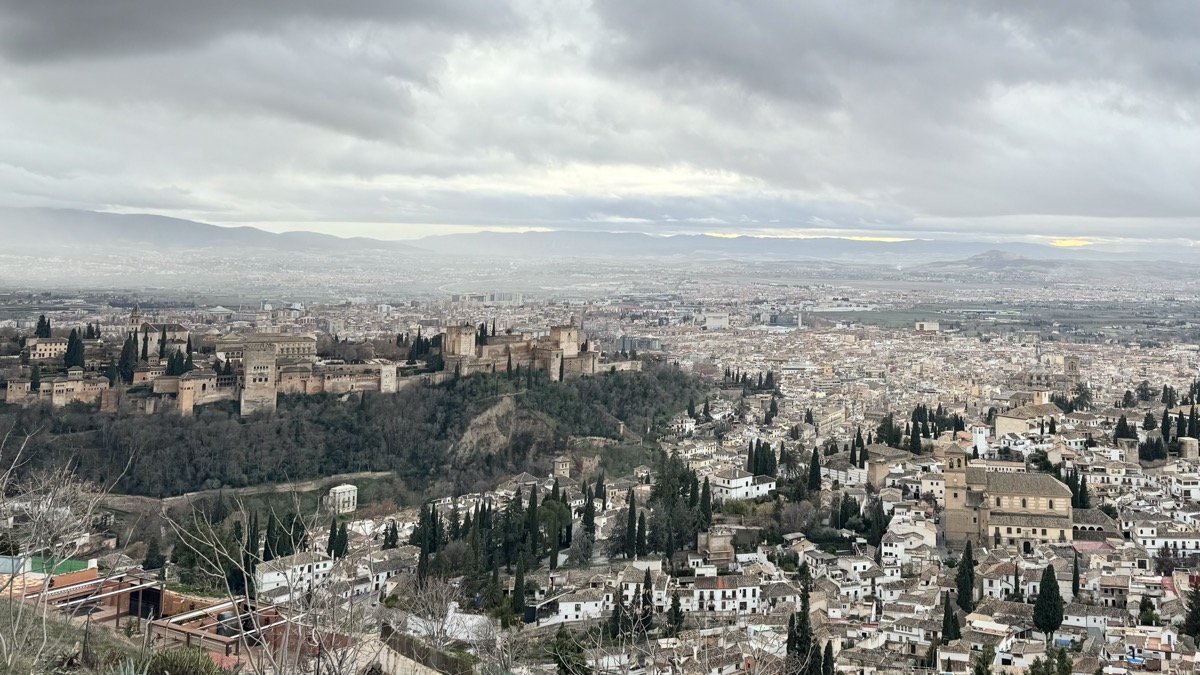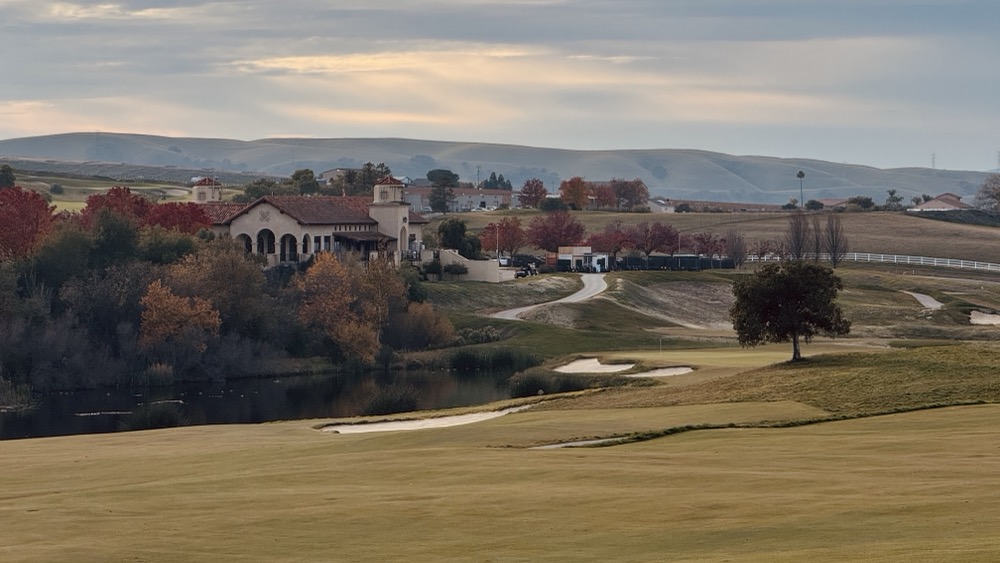Granada and the Alhambra
It is hard to imagine the beauty and sheer imposition the Alhambra has on Granada without seeing it in person.
 Alhambra in the golden hour
Alhambra in the golden hour
I think I first knew of the Alhambra when I played the boardgame after its release about 20 years ago (my first mention of the game). Playing the game gave me a vague idea of “patios” and “towers” and the concept of competing for favor with the local ruler. The game is abstract with what we used to call a “pasted on theme”, with the heart of the game being four different currencies used to buy the tiles you are laying out in your personal Alhambra:
Because no matter whether they are stonemasons from the north or horticulturalists from the south, they all want a proper wage and insist on their “native” currency.
The mechanic never matched the theme well because the garden tiles could show up in any of the four currency slots. Oh well, I digress.
While we didn’t have a few of the Alhambra from our apartment in the Albaicín neighborhood, it would come into view in just minutes no matter what direction we walked. It doesn’t represent the heart of the city (I think the cathedral has that claim), yet it is always lingering over the city on a narrow finger ridge-hill that nearly bisects the city.
I booked our entry tickets about a month in advance, knowing this was likely to be the most in-demand attraction we would visit in our journey around southern Spain. Slightly concerned about how we would walk up there (Apple and Google Maps gave us different stories) we made sure to ask around – there is indeed a direct (lovely) path from Albaicín up to the complex.
 Inside the Nasrid palaces
Inside the Nasrid palaces
The entry tickets are good for the day, but our timed entry of 08:30 for the Nasrid palaces was a wee challenge. Only after spending time on the grounds did we realize that most of the property is accessible without a ticket, and the main ticket area is simply where you would purchase a same-day ticket. It was about a 10 minute walk from there to the entry to the palaces, and we only arrived about 5 minutes late.
We enjoyed starting early (it was cold!), experiencing the patios, tile mosaics, and fountains with the tiny group of early risers. So much has been put into restoring this site that it makes me wonder what it looked like 300 years ago:
After being allowed to fall into disrepair for centuries, with its buildings occupied by squatters, the Alhambra was rediscovered following the defeat of Napoleon I, whose troops destroyed parts of the site. The rediscoverers were first British intellectuals and then other American and Northern European Romantic travelers. The most influential of them was Washington Irving, whose Tales of the Alhambra brought international attention to the site. The Alhambra was one of the first Islamic monuments to become the object of modern scientific study and has been the subject of numerous restorations since the 19th century.
There are roughly three distinct sites to explore, with many gardens to explore in the space between. There’s the Alcazaba (the castle or keep), the Nasrid palaces, and Generalife (summer palace and agricultural estate).
 Zoomed out view of Granada and the Alhambra
Zoomed out view of Granada and the Alhambra
I hope the image above gives a better sense of the topography of Granada. In the very foreground is the Albaicín neighborhood where we stayed. At the middle right is the cathedral. Between the cathedral and the end of the ridge-finger is the heart of old Granada. And that imposing ridge running from the left edge is the Alhambra, with the Generalife mostly outside the photo running further to the left.
Julie and I had an amazing hike up in the hills above the Alhambra and I’ll share more about that in a future post.








